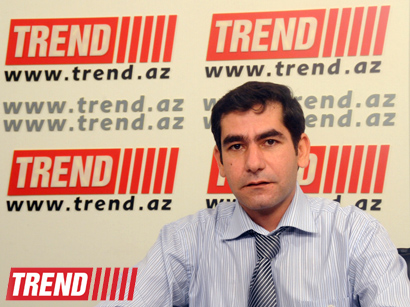Dalga Khatinoglu, Trend Agency's Iran Service Head
Iranian Oil Minister Bijan Namdar Zanganeh has issued orders for the development of the South Pars gas field on the first day of his work.
Zanganeh, who has visited South Pars, said that the priority will be placed on completing the development of the phases 12, 15, 16, 17, and 18.
In March 2009, Ex-President Mahmoud Ahmadinejad inaugurated the incomplete Phases 9 and 10.
So far, $46 billion has been invested in phases 11-24 of the gas field, but no single phase has come on stream yet. This is while that the total investment in Phases 11 to 24 of South Pars, a giant joint gas field with Qatar which holds around half of Iran's total gas reserves, had been estimated to be less than $40 billion.
The five phases, which have been prioritized by the Iranian oil minister, have been developed more than other phases.
Development plan of the Phase 12 started 61 months ago and has progressed by 92 percent. Development plan of the phases 15 and 16 started 73 months ago and has progressed by 92 percent. Development plan of the phases 17 and 18 started 73 months ago and has progressed by 82 percent.
Development plans of other phases started 38 months ago and have progressed by 50-64 percent.
Former Iranian oil minister Rostam Qasemi said late June that some $30 billion more is needed to complete the development of other phases of the gas field.
It seems that Iran has not been successful in completing even a single phase of the gas field in the absence of foreign companies, so that the development progress has, at best, reached 1.5 percent per month. Moreover, the development costs have been doubled.
On July 2, Gholamhossein Khajeh-Ali, the former managing director of the main contractor in the South Pars, told Mehr news agency that to save the South Pars, all the international sanctions should be removed, otherwise no single phase will come on stream.
According to him, the National Iranian Oil Company pays contractors in rupees and yuan. This is while that the necessary equipment cannot be imported using such currencies.
The U.S. and the EU sanctions have imposed sanctions on Iran's oil export and banking system, which increasingly faced Iran with problems to export oil and receive petrodollars.
Each country is currently allowed to deposit the money for importing Iranian crude oil using its national currency to a bank account in the same country. Iran is allowed to use the money for importing certain goods only from that country.
Necessity of increase in financing support and investment on South Pars case while, Iran's crude oil exports have fallen sharply in the past two years.
In 2011, Iran exported some 2.2 million barrels of oil per day. In 2012, exports fell to 1.2 mbpd. On August 22, Reuters reported that Iran's crude oil exports fell in the first half of 2013 by 20 percent and reached 960,000 bpd.
It seems that President Hassan Rouhani should grapple with economic woes of the Ahmadinejad administration along with the international sanctions.
But, prioritization, efficient management, along with interaction with the global community can breathe new life into Iran's energy projects and reduce the effects of the international sanctions.
Unlike other sanctions, which require complicated legal processes, removing the U.S. sanctions - which will be positive in the participation of foreign companies in Iran's oil and gas projects - is likely, although resolving Iran's nuclear issue is a prerequisite.
This could be the first stage of step-by-step strategy toward removing concerns about Iran's nuclear program gradually versus easing sanctions.
Iran holds around 33 trillion cubic meters of gas reserves, but it has no capacity to produce natural gas in excess of the domestic need in order to be exported.






